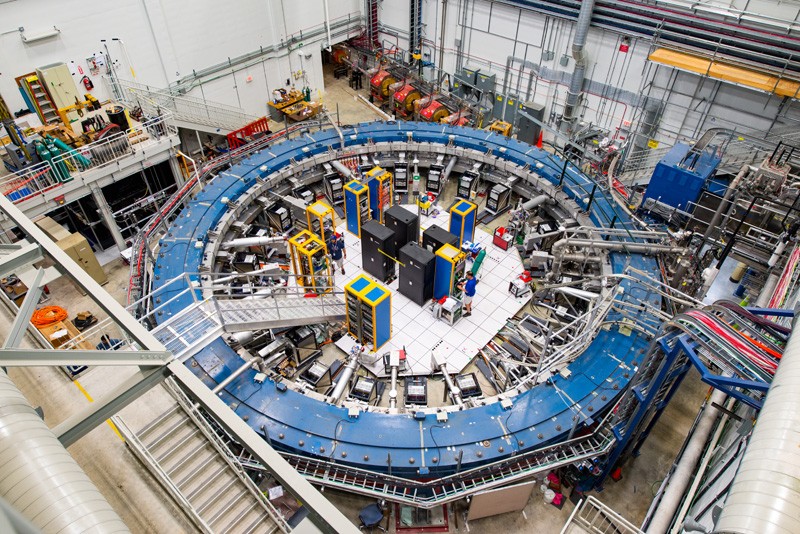World-best measurements made in mission to crack muon mystery
Manchester scientists have played a key role in achieving the worldĮāšĪĘĶÆĩs most precise measurement of a mysterious property of the muon, a subatomic particle that could help reveal new physics beyond our current understanding.
The breakthrough, , the U.S. Department of EnergyĮāšĪĘĶÆĩs Fermi National Accelerator Laboratory, brings researchers one step closer to discovering forces or particles beyond the Standard Model of physics.
This result represents the most precise measurement ever made at a particle accelerator anywhere in the world, and could help unlock the secrets of the universe.
What is the Muon g-2 Experiment?
The Muon g-2 experiment investigates the subtle ĮāšĪĘĶÆĩwobbleĮāšĪĘĶÆĩ in the motion of muons, particles similar to electrons but with 200 times more mass, as they move through a magnetic field.
This wobble, known as the muonĮāšĪĘĶÆĩs ĮāšĪĘĶÆĩanomalous magnetic momentĮāšĪĘĶÆĩ, or g-2, provides one of the most sensitive and precise tests of the Standard Model of particle physics, the theory that explains how fundamental particles and forces interact.
Landmark results
This announcement reveals the experimentĮāšĪĘĶÆĩs third and final measurement, which confirms earlier results, but with a much better precision of 127 parts-per-billion, surpassing the original experimental design goal of 140 parts-per-billion.
These results now stand as the worldĮāšĪĘĶÆĩs most accurate measurement of the muon magnetic anomaly.
Representing more than a decade of work, this milestone is expected to stand as the definitive benchmark for testing the Standard Model for years to come.
Critical UK contribution
Scientists from the Universities of Manchester, Lancaster, Liverpool, and University College London were central to the experiment, which brought together 176 researchers from 34 institutions across seven countries.
The UK-built straw tracking detectors were essential in tracing the motion of the muon beam, a critical part of the analysis that enabled this unprecedented level of precision.
The University of Manchester was responsible for mapping the vertical oscillations in the beam motion using the detectors and in the theory prediction for the measured value.
Professor Mark Lancaster, Principle Investigator of the UK groups from The University of Manchester, said: ĮāšĪĘĶÆĩThis is the most precise measurement ever made at a particle accelerator and the culmination of over a decadeĮāšĪĘĶÆĩs work. The motion of the muon beam was exquisitely traced by the UK-built straw tracking detectors and was a key part of the analysis. That we now have a measurement to a precision of 0.1 parts per million and a theoretical prediction, to 0.5 parts per million, is a remarkable achievement from the work of hundreds of people.ĮāšĪĘĶÆĩ
STFCĮāšĪĘĶÆĩs Professor Sinead Farrington, Director of Particle Physics, added: ĮāšĪĘĶÆĩWhatĮāšĪĘĶÆĩs really fascinating about this result is the way it has illustrated the interplay between theoretical predictions and experimental results - each can lead the other, and make demands on the precision of the other.
ĮāšĪĘĶÆĩThe UK has played critical roles of which we can be proud, both in leadership and in developing the straw tracking detectors, in this highly international collaboration.ĮāšĪĘĶÆĩ
Read the at the Fermilab website.
